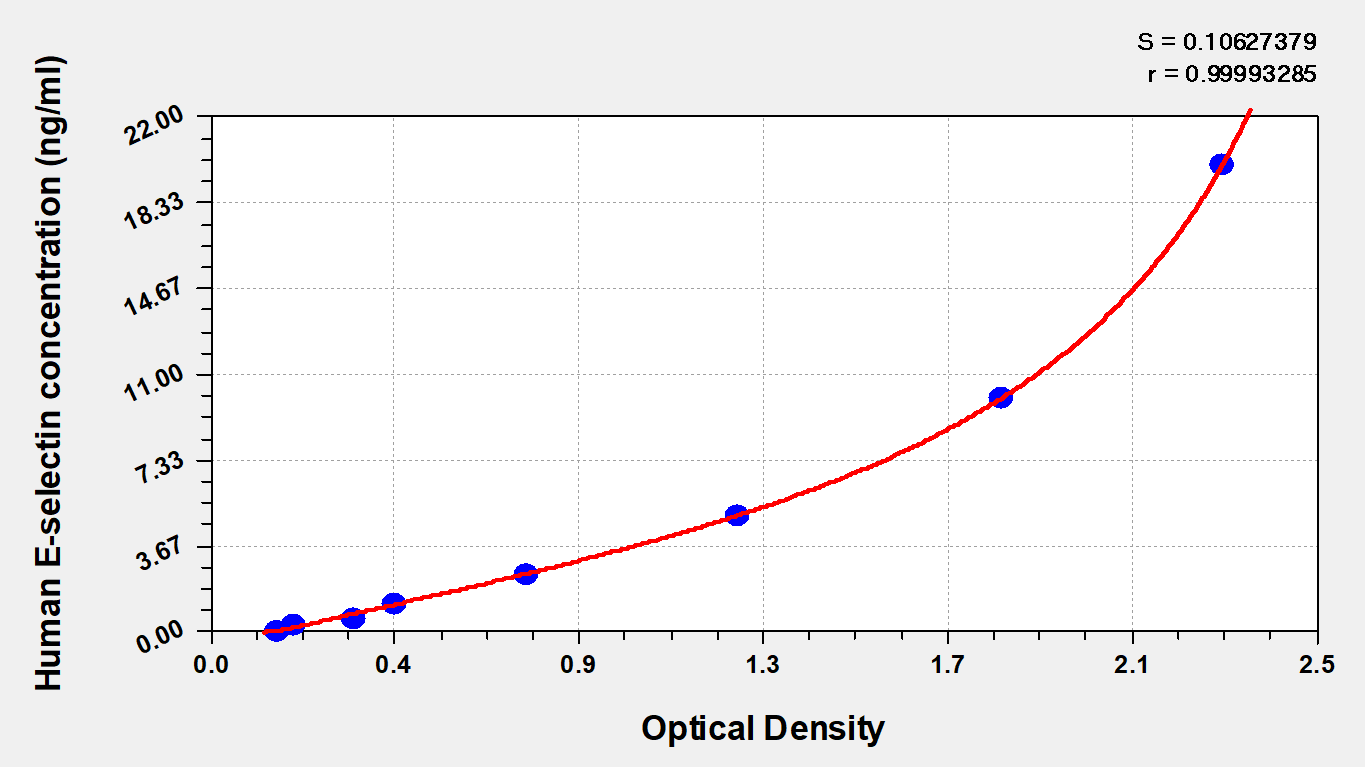E-selectin (SELE) is a cell adhesion molecule primarily expressed on activated endothelial cells in response to inflammatory stimuli such as cytokines and bacterial endotoxins. This glycoprotein plays an important role in the initial steps of leukocyte recruitment during inflammation by mediating the rolling and tethering of neutrophils, monocytes, and certain T-cell subsets along the vascular endothelium. E-selectin expression is rapidly upregulated during acute inflammatory responses. It serves as an important biomarker for endothelial activation and vascular inflammation in various pathological conditions.
The Human E-Selectin ELISA kit (CSB-E04540h) is a quantitative sandwich immunoassay designed for measuring selectin E levels in human serum, plasma, and tissue homogenates. The assay offers a detection range of 0.312 ng/mL to 20 ng/mL with a sensitivity of 0.078 ng/mL. The protocol requires 50-100 μL sample volume and can be completed within 1-5 hours, with optical density measurements taken at 450 nm wavelength.
Application Examples
Note: The following application examples are drawn from a selection of publications citing this product. For additional applications, please refer to the full list of references in the "Citations" section.
This ELISA kit has been used in clinical research studies to measure E-selectin levels in human biological samples as part of biomarker profiling. The kit supports research into vascular inflammation and endothelial dysfunction across various disease contexts. Researchers have used this assay alongside other inflammatory and vascular markers to measure disease-related changes in circulating biomarker levels.
• Vascular inflammation research: Measuring E-selectin as a marker of endothelial activation in serum samples from patients undergoing clinical evaluation
• Multi-biomarker profiling: Integration with panels measuring various inflammatory mediators, adhesion molecules, and vascular markers to provide disease characterization
• Clinical biomarker studies: Measurement of circulating E-selectin levels in plasma samples as part of broader research into inflammatory and vascular pathways
• Pre-surgical screening: Evaluation of E-selectin concentrations in patient serum samples collected prior to surgical procedures as part of biomarker screening protocols






